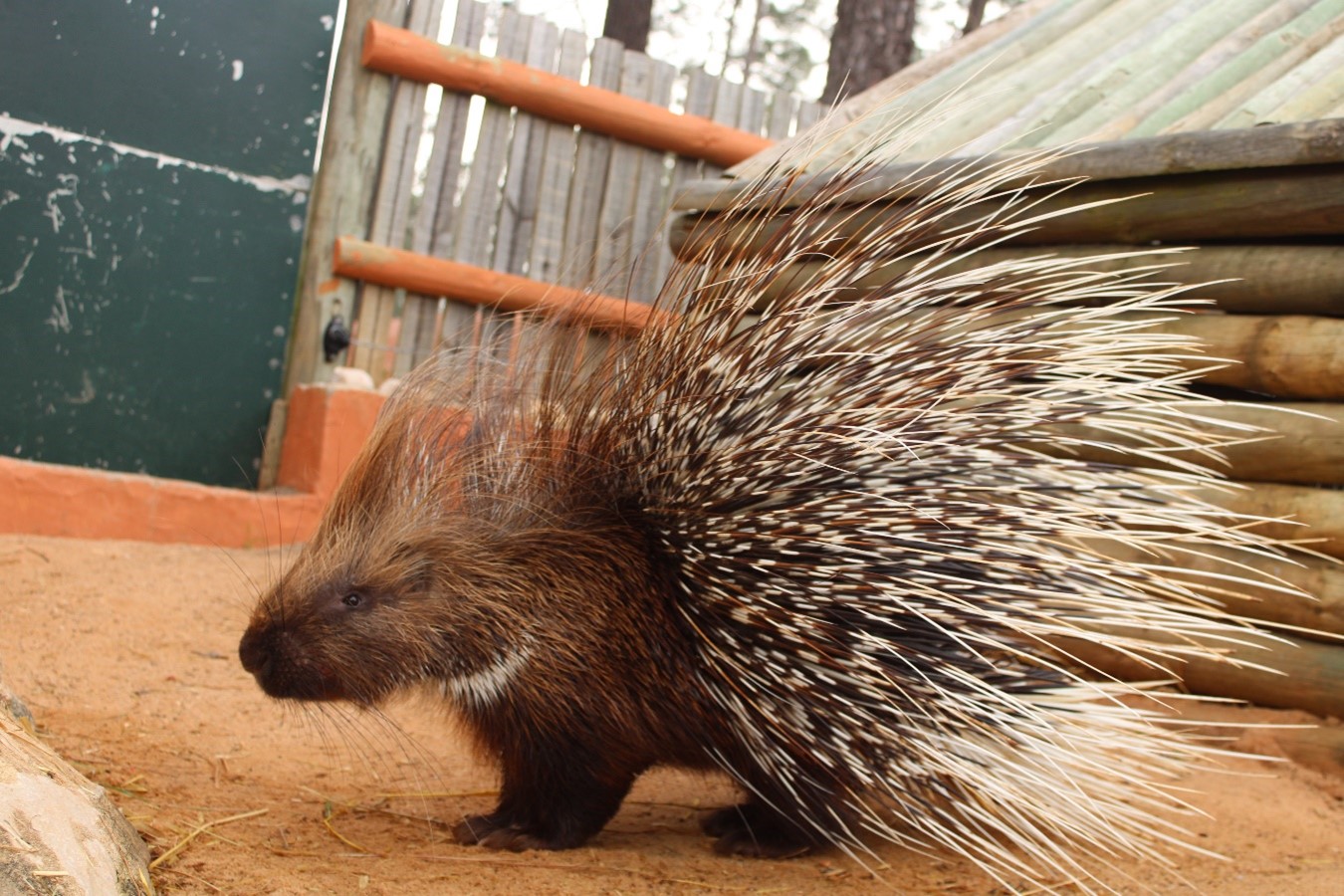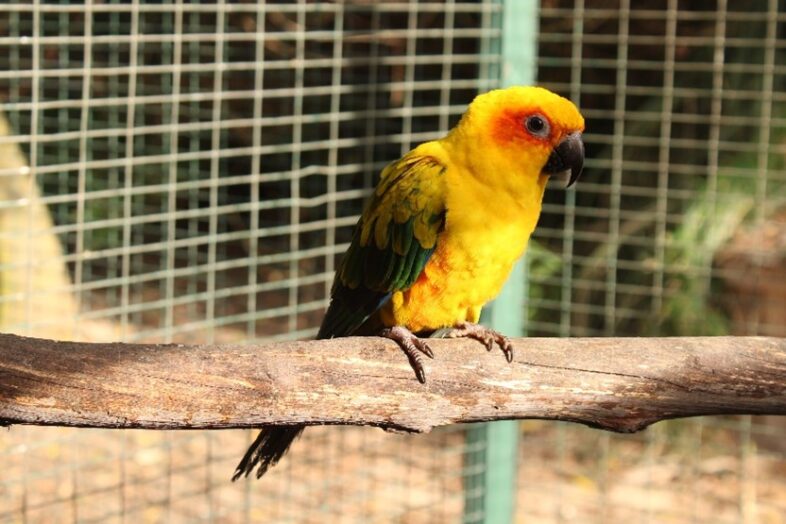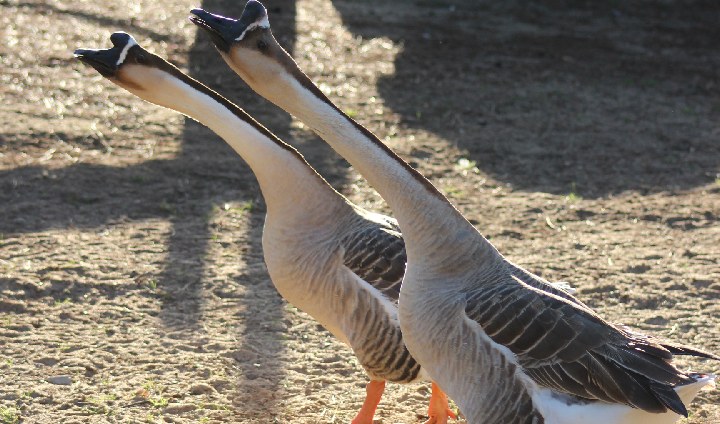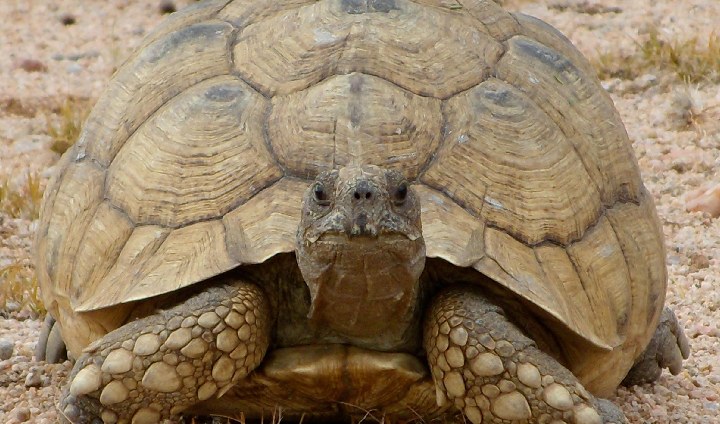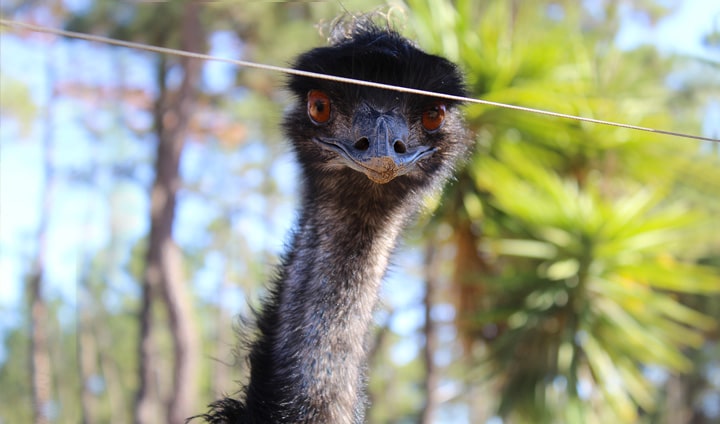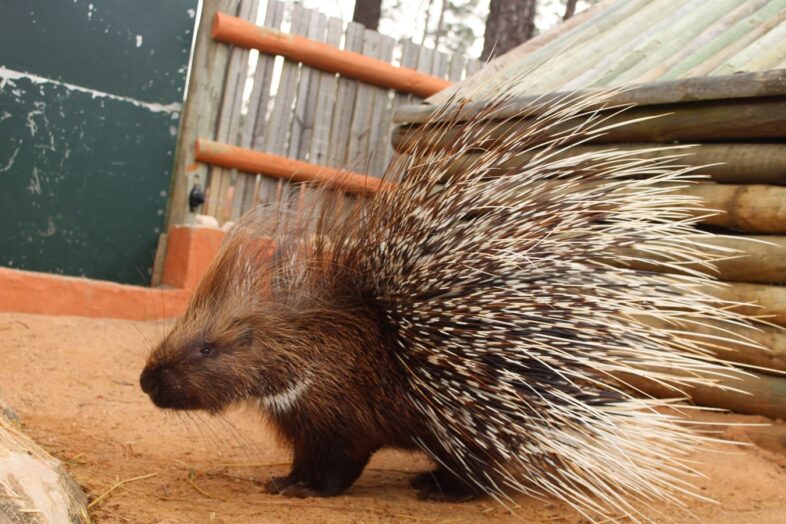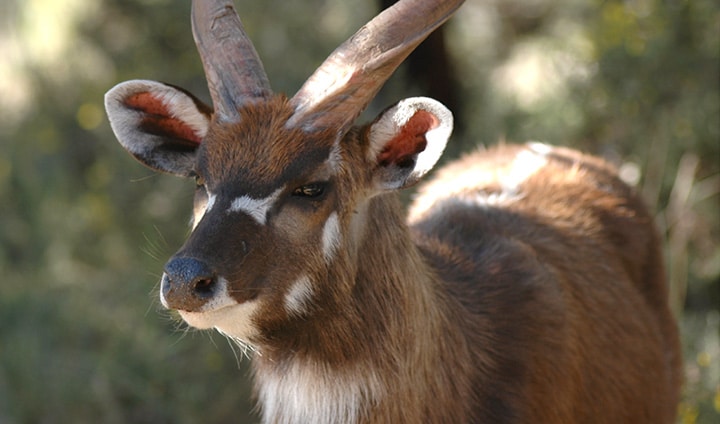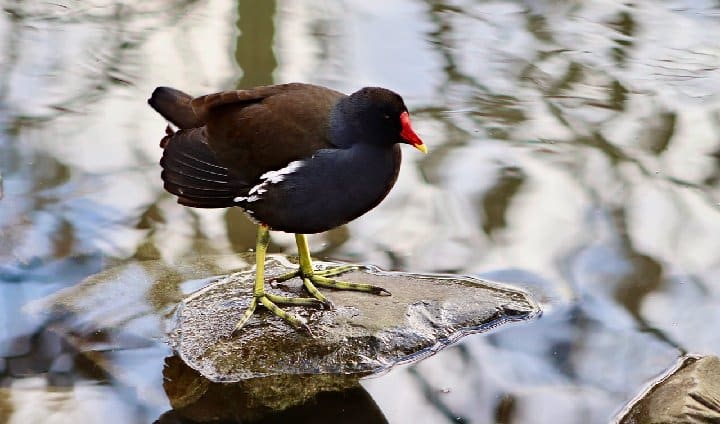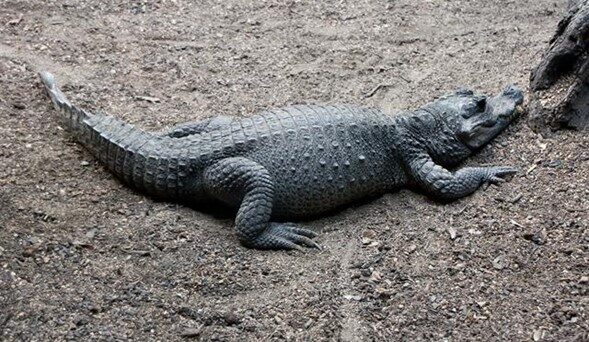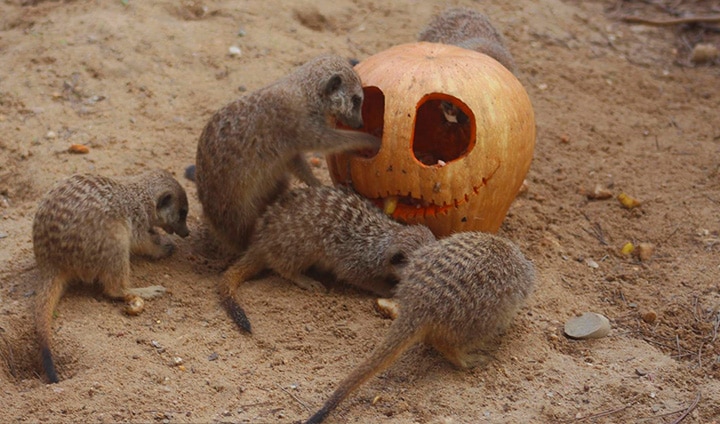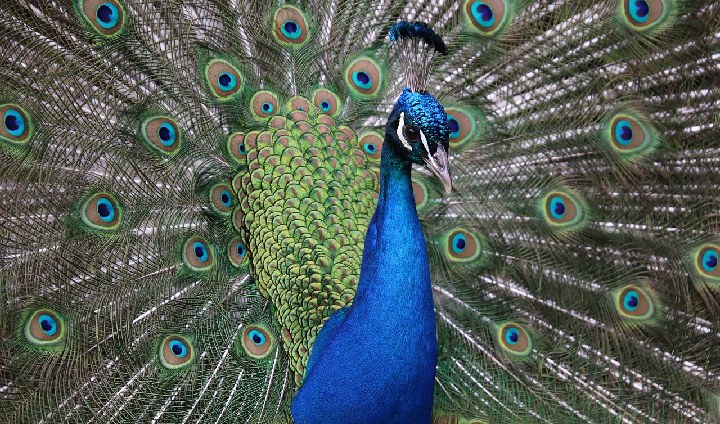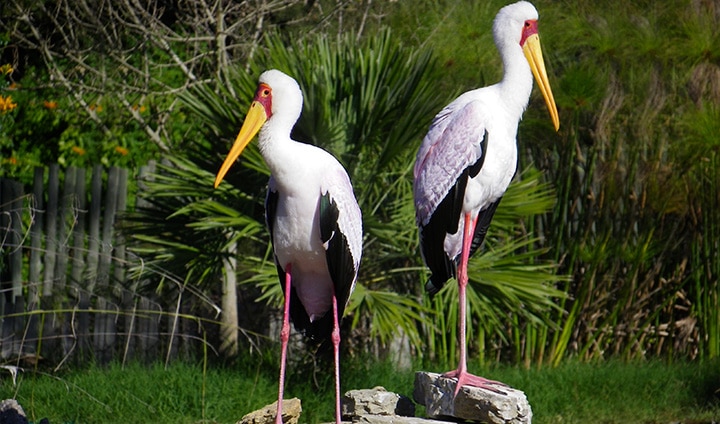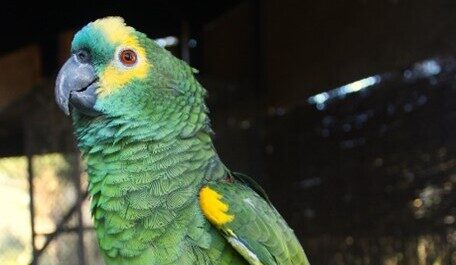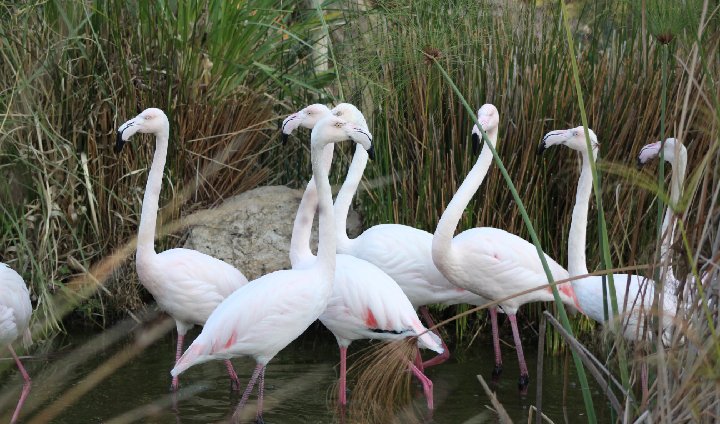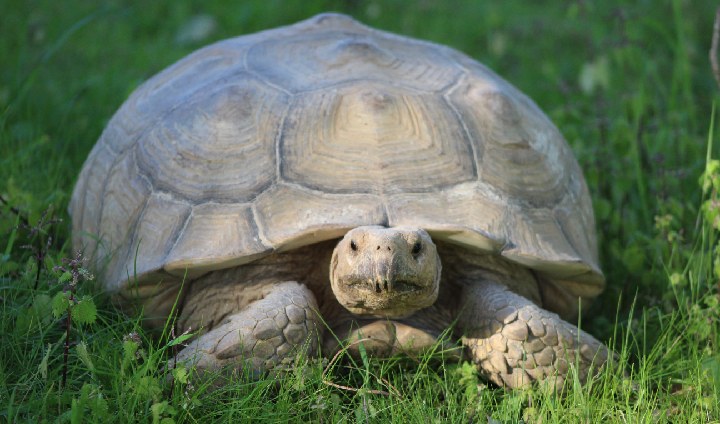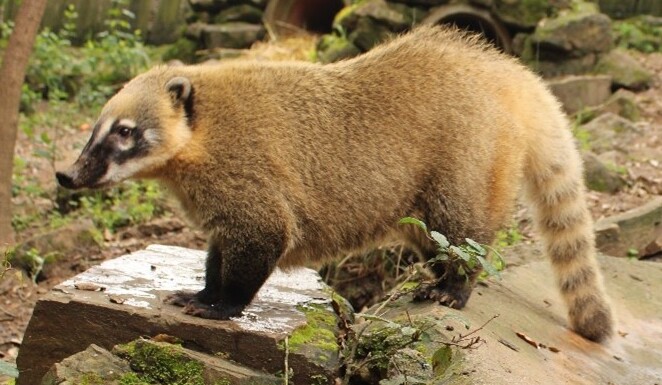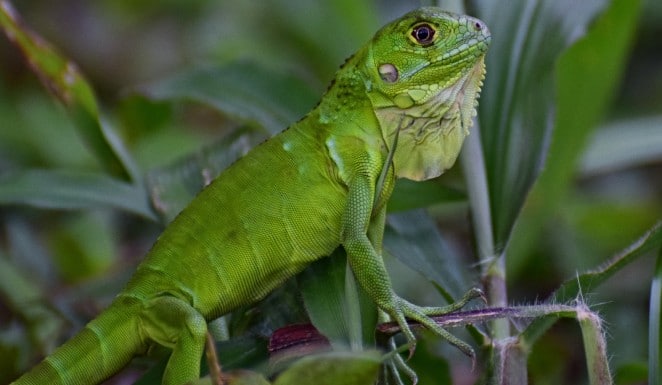Diet: Herbivorous animal with a diet consisted of fruits, roots and tree bark. They can occasionally ingest insects and small vertebrates. It is normal to see porcupines gnawing on bones to obtain calcium and to sharpen their teeth.
Reproduction: The breeding season is widespread throughout the year. Gestation lasts 66 days and normally 1 to 2 two very well developed offspring are born. The young are born with their spines, but they are still soft. The offspring weighs only 3% of the mother’s weight. They are considered adults between the first and second year of life, reaching sexual maturity in the meantime. Copulation takes place exclusively at night.
Distribution and Habitat: This species of porcupine can be found south of the Sahara Desert and more specifically in South Africa. As a species that adapts very easily, it can survive in dense forests, rocky areas, mountains, cultivated areas or even in the desert.
Behavior: Monogamous animals and have a great family instinct. Porcupines are terrestrial animals, they cannot climb trees, but they can swim. In the colder months they tend to stay in dens, but do not hibernate. Thorns are an effective method of defense against predators. When threatened, they raise their spines and create the illusion of a larger animal.
Scientific name: Hystrix africaeaustralis
Class: Mammalia
Order: Rodentia
Family: Hystricidae
Dimensions: 60 to 80 cm long
Longevity: 15 years in the wild and 21 years in captivity
Conservation Status: Least Concern


